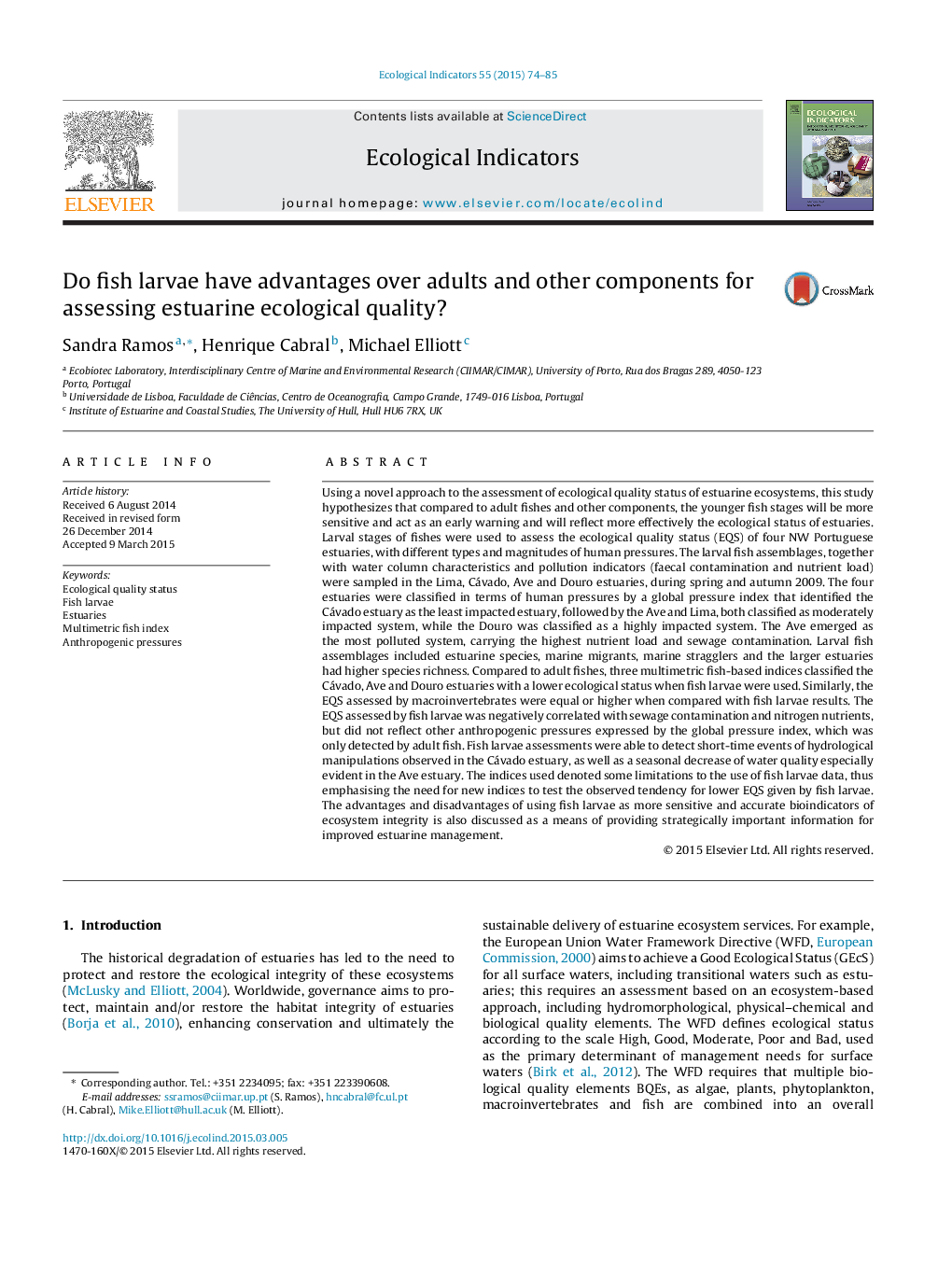| کد مقاله | کد نشریه | سال انتشار | مقاله انگلیسی | نسخه تمام متن |
|---|---|---|---|---|
| 6294384 | 1617146 | 2015 | 12 صفحه PDF | دانلود رایگان |
- Fish larvae was used as a novel approach to assess ecological status of estuaries.
- Lower ecological status assessed by fish larvae than adults or macroinvertebrates.
- Fish larvae detected short-time events of hydrological or water quality alterations.
- Advantages/disadvantages of incorporating fish larvae in monitoring programmes.
- New focus in bioassessments and early warning of environmental degradation.
Using a novel approach to the assessment of ecological quality status of estuarine ecosystems, this study hypothesizes that compared to adult fishes and other components, the younger fish stages will be more sensitive and act as an early warning and will reflect more effectively the ecological status of estuaries. Larval stages of fishes were used to assess the ecological quality status (EQS) of four NW Portuguese estuaries, with different types and magnitudes of human pressures. The larval fish assemblages, together with water column characteristics and pollution indicators (faecal contamination and nutrient load) were sampled in the Lima, Cávado, Ave and Douro estuaries, during spring and autumn 2009. The four estuaries were classified in terms of human pressures by a global pressure index that identified the Cávado estuary as the least impacted estuary, followed by the Ave and Lima, both classified as moderately impacted system, while the Douro was classified as a highly impacted system. The Ave emerged as the most polluted system, carrying the highest nutrient load and sewage contamination. Larval fish assemblages included estuarine species, marine migrants, marine stragglers and the larger estuaries had higher species richness. Compared to adult fishes, three multimetric fish-based indices classified the Cávado, Ave and Douro estuaries with a lower ecological status when fish larvae were used. Similarly, the EQS assessed by macroinvertebrates were equal or higher when compared with fish larvae results. The EQS assessed by fish larvae was negatively correlated with sewage contamination and nitrogen nutrients, but did not reflect other anthropogenic pressures expressed by the global pressure index, which was only detected by adult fish. Fish larvae assessments were able to detect short-time events of hydrological manipulations observed in the Cávado estuary, as well as a seasonal decrease of water quality especially evident in the Ave estuary. The indices used denoted some limitations to the use of fish larvae data, thus emphasising the need for new indices to test the observed tendency for lower EQS given by fish larvae. The advantages and disadvantages of using fish larvae as more sensitive and accurate bioindicators of ecosystem integrity is also discussed as a means of providing strategically important information for improved estuarine management.
Journal: Ecological Indicators - Volume 55, August 2015, Pages 74-85
